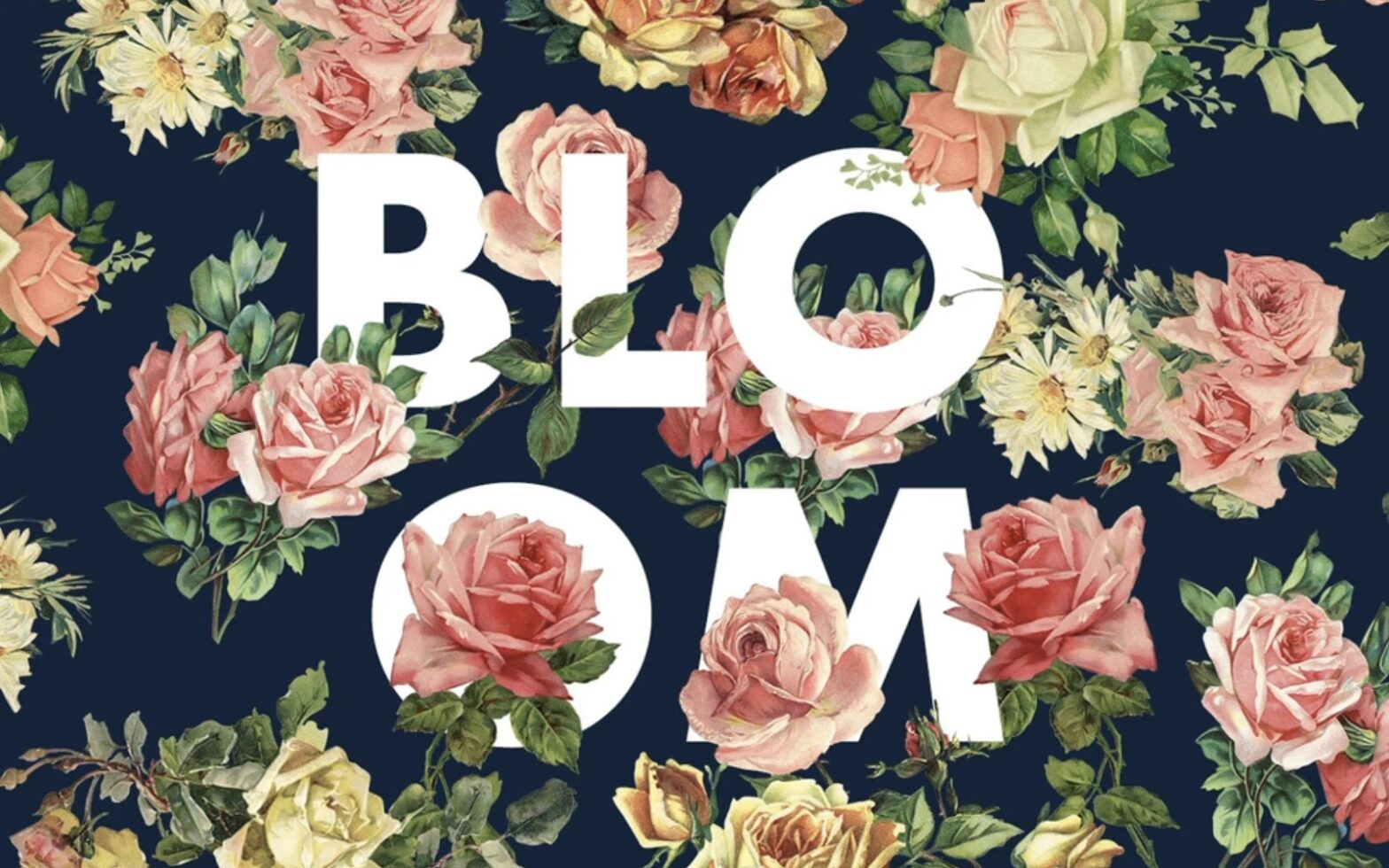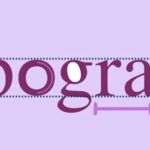Imagine walking through a garden where, instead of flowers, you find letters blooming in their place—this is the essence of floral typography. It’s a creative twist on lettering that weaves the charm of nature’s beauty into the fabric of words, making the alphabet as pleasing to the eyes as a bouquet of fresh flowers. In the world of design, floral typography isn’t just about slapping some flower images onto letters. It’s a crafty blend, where petals and leaves might curve into ‘S’s or ‘C’s, and stems might stiffen into ‘I’s or ‘L’s. Designers act like gardeners, carefully choosing which flower fits each letter, ensuring the text is still easy to read while it dances with petals and leaves.
But why go through all this trouble? Well, floral typography is more than just a pretty face. It adds a layer of meaning and emotion to words. Wedding invitations, beauty product labels, and spring event posters often use it to convey elegance, growth, or a touch of whimsy. Creating floral typography isn’t like growing an actual garden, but it does need patience. Artists often start with a sketch, planting the seeds for their flowery letters. They’ll think about which flowers suit the mood: roses for romance, daisies for cheerfulness, or vines for a wild twist. After the sketch, they’ll use digital tools to bring the garden to life, playing with color, shadow, and texture until it’s just right.
A Timeless Bouquet
Floral typography has been around for a while, and it’s not wilting anytime soon. It’s a timeless style that continues to evolve, just like fashion. It can be classic and vintage or modern and bold. No matter the trend, it always has that touch of natural elegance that only floral elements can provide.
So, the next time you see a piece of floral typography, take a moment to appreciate it. Like any good garden, it’s a blend of planning, care, and a whole lot of love.
The Blossoming of Letters
Imagine walking through a garden where, instead of flowers, you find letters blooming in their place—this is the essence of floral typography. It’s a creative twist on lettering that weaves the charm of nature’s beauty into the fabric of words, making the alphabet as pleasing to the eyes as a bouquet of fresh flowers. The dance of blooms and alphabets isn’t just visually appealing; it’s a multisensory experience, with the imagined fragrances mingling with the visual feast.
Petals and Serifs
In the world of design, floral typography isn’t just about slapping some flower images onto letters. It’s a crafty blend, where petals and leaves might curve into ‘S’s or ‘C’s, and stems might stiffen into ‘I’s or ‘L’s. Designers act like gardeners, carefully choosing which flower fits each letter, ensuring the text is still easy to read while it dances with petals and leaves.
This artful practice takes a keen eye—one that can spot the perfect rose for a robust ‘R’ or the tiniest bud for a delicate ‘i’. There’s a rhythm to it, a natural ebb and flow that respects the organic shapes of the flora and the geometric needs of the typeface.
More Than Just a Pretty Face
But why go through all this trouble? Well, floral typography is more than just a pretty face. It adds a layer of meaning and emotion to words. Wedding invitations, beauty product labels, and spring event posters often use it to convey elegance, growth, or a touch of whimsy. These designs whisper stories of renewal, of nature’s cycles, and of the intricate beauty found in both the written word and the sprouting bud.
Moreover, the technique is a subtle nod to the harmony between humanity and nature. It’s a reminder that our stories are intertwined with the natural world, and that even in our daily communications, there can be a place for the grace and wildness of the natural world.
Planting the Seeds
Creating floral typography isn’t like growing an actual garden, but it does need patience. Artists often start with a sketch, planting the seeds for their flowery letters. They’ll think about which flowers suit the mood: roses for romance, daisies for cheerfulness, or vines for a wild twist. These aren’t arbitrary decisions; each flower brings its own symbolism and historical baggage, and the designer must play matchmaker between flower and font.
The creation process itself can be intricate, often involving a mix of hand-drawn elements and digital manipulation. It’s a delicate dance between traditional artistry and modern technology, bridging the gap between old and new.
When done well, floral typography is a visual treat that can make you stop and stare, just like a vibrant garden. It’s used all over—from book covers to brand logos—spreading its roots into various design fields. Each completed piece is a tapestry of colors, textures, and shapes that can transport you to a world where language and nature exist in perfect harmony. And when such typography is part of branding, it tells a story of the brand without a word being read. It’s emotive and evocative, stirring feelings and associations in the consumer’s mind. Floral typography has been around for a while, and it’s not wilting anytime soon. It’s a timeless style that continues to evolve, just like fashion. It can be classic and vintage or modern and bold. No matter the trend, it always has that touch of natural elegance that only floral elements can provide.
It’s a nod to the past, a style that harkens back to the ornate and elaborate designs of bygone eras, yet it finds new life in contemporary design. It’s been reimagined by each generation of artists, infusing it with their own cultural and temporal signatures.
Cultivating Connection
In our digital age, there’s something profoundly humanizing about incorporating elements of the natural world into our designs. As screens become a more pervasive part of our lives, designs that hark back to the natural world offer a breath of fresh air. They serve as a bridge between the digital and the organic, a connection point that can often feel lost in our tech-driven lives. This approach to typography fosters a connection, not just between the viewer and the text, but between the viewer and the wider world. It’s a small reminder that there’s beauty to be found in the blend of nature’s creations and human expression.
The Future in Full Bloom
Looking ahead, the possibilities for floral typography are as endless as the varieties of flowers in the world. With advancements in design software and a growing interest in sustainable and organic products, the appeal of this style is set to flourish. Designers will continue to push boundaries, finding new ways for petals to partner with pixels, and for greenery to grace graphics.
In conclusion, floral typography is more than a fleeting trend; it’s a versatile and vibrant form of expression that resonates with people on a deep, instinctive level. It taps into our innate love for nature and our ceaseless desire for beauty in our everyday lives. It shows us that language, often considered a purely human construct, can be enriched and enlivened by the touch of nature’s hand.





